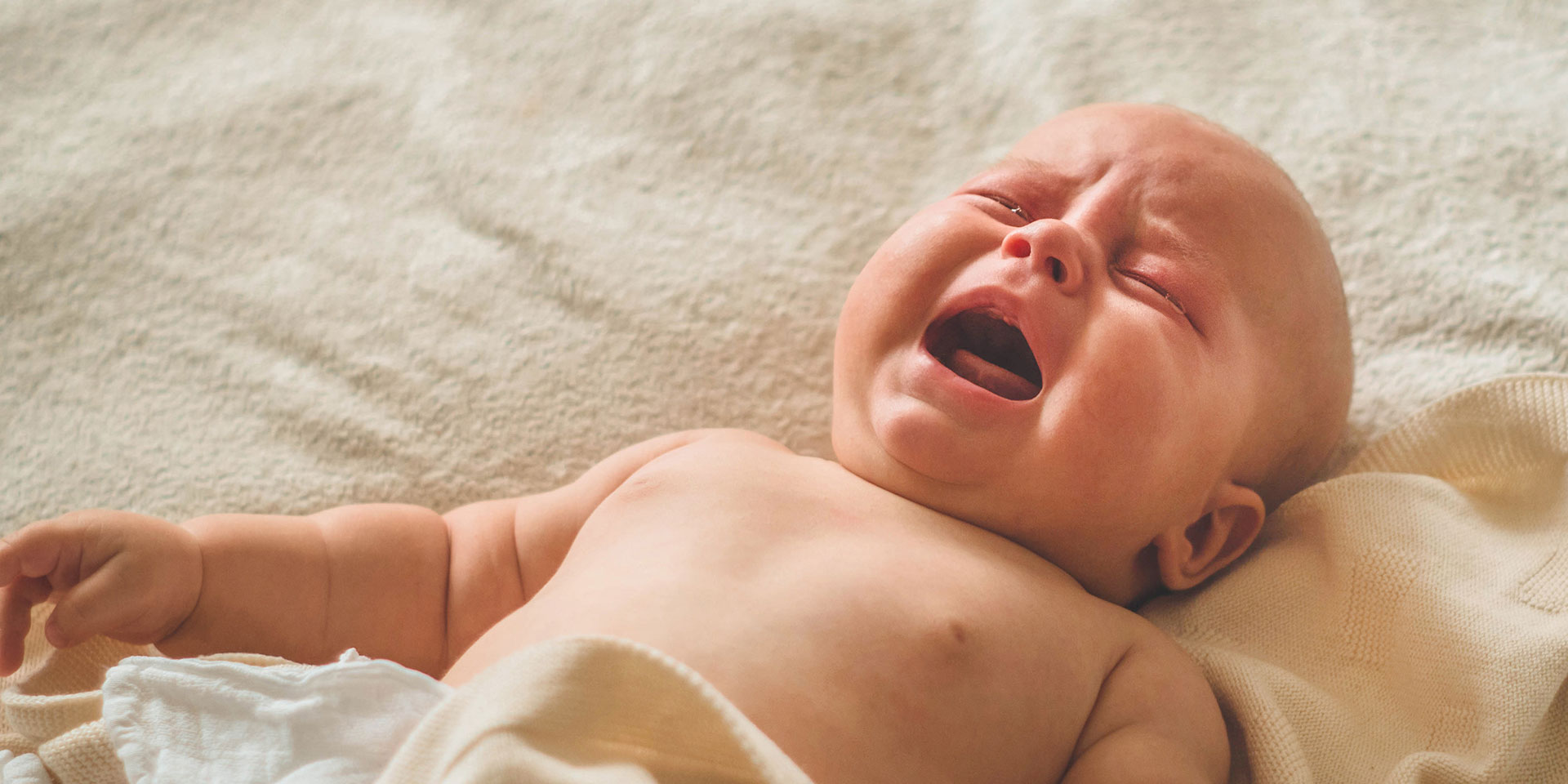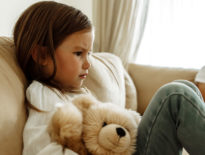It is said that it takes a village to raise a child. It’s folk wisdom acknowledging that parenting requires the contribution of the whole community. What value does the community add, especially when the community in question is the scientific one?
You don’t have to be an experienced anthropologist or who knows what observational genius to notice, by browsing on a few popular mom blogs, two characteristics that enliven these environments: vehemence and disagreement. The conviction that drives their authors and readers alike to promote various solutions to the challenges of motherhood becomes almost insulting when you see how contradictory these solutions are sometimes. What should a new mother who is exhausted and exasperated by the inconsolable crying of her baby, understand from these digital counsellors, when some of them recommend letting her baby cry until they unlearn getting their way by crying, while others say that she needs to show her availability immediately, thus securing the child’s healthy attachment to the parent? How much light can science shed in the dark corners of the internet that are sprinkled with Lego pieces?
The crying of a child aged between 3 months and 6 years produces, on average, 105.15 decibels.
While it is generally recommended to limit exposure to noise greater than 85 decibels, some children may even cry at an intensity of 110 decibels. Based on this, we could infer that babies come equipped with top level audible warning systems, as if deliberately built so that their needs cannot be ignored. However, science—more precisely psychology—has much more to say about the dilemma above.
Psychology began to methodically address children’s development and the role of the parent only in the last two centuries. During this time, the great theories upon which psychologists have based their interpretations, measurements and lessons about child rearing have varied widely and often contrasted from the little chaos we encounter in the parenting blogosphere.
Parenting: the four controversies
The main theories of child development examined and explained development from different angles. Some researchers focused on the stages of maturing (Arnold Gesell, Sigmund Freud, Jean Piaget, Lev Vygotsky, Erik Erikson), while others focused on the external factors dictating the child’s becoming (John Watson, BF Skinner, Albert Bandura, Uri Bronfenbrenner, Noam Chomsky).
Psychology began to methodically address children’s development and the role of the parentse only in the last two centuries.
Before discussing the specifics of each of these contributions, we must take a step further back, to observe the big questions/dilemmas that make up the matrix of all current development theories. What places child development theories in separate categories is the answer they give to four questions that are fundamental in the field:
1. What has a bigger influence on human development: nature (biology / genetic forces) or nurture (environmental forces)?
2. What best describes development: universality (common experiences that lead to a common set of predictable consequences) or diversity (disparate experiences that have very different results)?
3. What is the child: an active agent (who influences her own course of development) or a passive agent (who only responds to outside forces)?
4. What is development: the result of qualitative changes (sudden jumps from one stage to an extremely different one) or quantitative changes (the gradual acquisition of new skills, which are added to the old ones)?
We cannot really understand the weight of any advice on raising children unless we take into account its premises. The four controversies[1] mentioned above are practically the pillars on which most of today’s parenting debates rest.
The roots
Early theories of developmental psychology focused heavily on abnormal behaviours, while more recent theories focus on key moments of growth; on dividing development into stages.[2]
The theory of biological maturing, as put forward by Arnold Gesell, argues that a child’s development is dictated from within and that they follow an established biological program. Gesell believed that all children go through the same stages of development, in the same order, each at their own pace. Because the biology of the child is of crucial importance for Gesell, the philosophy of parenting he supported focused on a child-centred approach. Parents had to recognize their child’s genetic schedule and observe what the child needs, and what they’re ready to do and learn. Gesell advised parents to suspend their expectations of what the child “should” do,[3] especially in the early years of her life. However, critics objected to his emphasis on biological maturing and claimed that he gave too little importance to environmental factors, such as learning.[4] Other researchers claim that Gesell’s stages are not valid, because at any stage children may have more abilities than those identified by the psychologist.
The psychosexual theory introduced by Sigmund Freud argues that the developmental stages of childhood correspond to the child’s sexual energy focusing on certain regions of the body, usually associated with eroticism. According to Freud, if the person fails to move from one stage to another in their growth, they can develop specific fixations given by the stage at which they got stuck. Freud also believed that personality settles at around the age of five. Today, his theory no longer enjoys respect among experts in children’s education; however, his influence still lingers in certain aspects of psychoanalysis (such as the influence of unconscious impulses on conscious behaviour) which were revolutionary in their time.
In proposing the theory of psychosocial development, Erik Erikson owes a lot to Freud, although Erikson’s theory does not consider sexual interest to be the driving force of development, as Freud believed. However, Erikson too argued that the individual develops in successive stages and that, at each stage, they face a developmental conflict which can negatively impact the person’s functioning and their growth, if it is left unresolved. Even so, Erikson does not explain what types of experiences are needed for a child to be successful in moving from one stage to another, nor does he present ways to resolve potential conflicts that may arise at each stage.
Jean Piaget, one of the most influential developmental psychologists, proposed the theory of cognitive development and thus gave a scientific framework to the idea that there is a qualitative difference between the thinking of a child and that of an adult. A child’s cognition and ability to reason change qualitatively over time. This happens not only through the child’s own contribution to the understanding of the world (the child learns, through experience, to verify their previous knowledge), but also through the contribution of biology (a child who has reached a certain biological stage may have the mental capacity to use environmental information to develop new thinking skills).
The behaviourist (conditioning) paradigm came with a completely different set of views. Launched by the controversial JB Watson and continued by BF Skinner, it proposes that development is a child’s reaction to an external action: stimulus, reward, punishment, and confirmation, and that behavioural diversity occurs because the adults in the children’s lives offer them different rewards and punishments. Behaviourism does not take into account thoughts or feelings, but focuses strictly on how the child is shaped by outside experiences. In other words, it is a paradigm that prioritizes the influence of the environment.
The sociocultural theory, supported by the research of psychologists such as Albert Bandura and Lev Vygotsky, focuses on the way in which culture is transmitted from one generation to another and, by perceiving biology as not having a direct impact on cognitive development, proposes the idea that inherited traits and those learned from the interaction with others influence the way a child interacts with the environment and the type of experiences they have, which end up making up their identity. The theory of attachment first proposed by John Bowlby, supported by Mary Ainsworth, Diane Baumrind and others, also falls under the umbrella of the sociocultural theory. In essence, this theory holds that there is a connection between the child and the mother (or caregiver) that the child naturally tends to want and will fight for with everything in his power (cooing, laughing, crying). This connection (attachment) creates in the child a pattern of relationship with other people, so its rupture or its dysfunctions have repercussions, including in adult life.

So, what about the crying baby?
The discussion of developmental theories could go on for a long time, by analysing other equally complex or more fragmented approaches to parenting, but in order to maintain the practical direction, we have already gathered all the data needed to deconstruct the controversy about the crying child. The advice to let the child cry alone, in the hope that will help him develop a coping mechanism, comes from the behaviourist theory. A follower of the behaviourist idea that the child’s feelings do not matter in the educational process and that a child is allowed to cry only if they suffer physically[5] will think about whether the baby has been fed, changed, has any discomfort and, if the answer to all this is negative, will heed the advice to ignore crying, expecting that the child and parents will have quiet nights in a few days.
An attachment theory follower will be horrified by this recommendation, arguing that the child’s crying is the way she tells her mother that she physically and/or mentally needs her presence and that the mother’s insensitivity to this call will strain their relationship.
Right when the two counsellors are ready to go to fight, a third researcher, this time a paediatrician, comes in and says that, following a five-year randomized trial, they found no emotional or behavioural differences between the 7-month-old children with sleep problems who were “trained” the behaviourist way and those who received attention based on the attachment theory model.
The lack of scientific consensus on the ideal method of responding to the most common challenges of raising a child should also balance the vehemence in espousing the interpretive preferences of one theory or another, especially in front of new mothers, who are in desperate need of support, not vilification.
No one really knows how to soothe a baby’s cry of 110 decibels.
Sometimes it’s the mother’s warm arms, other times her tears of helplessness. However, the important thing is that the crying does stop and this is the first lesson about suffering that the baby and his or her parents learn together.



















